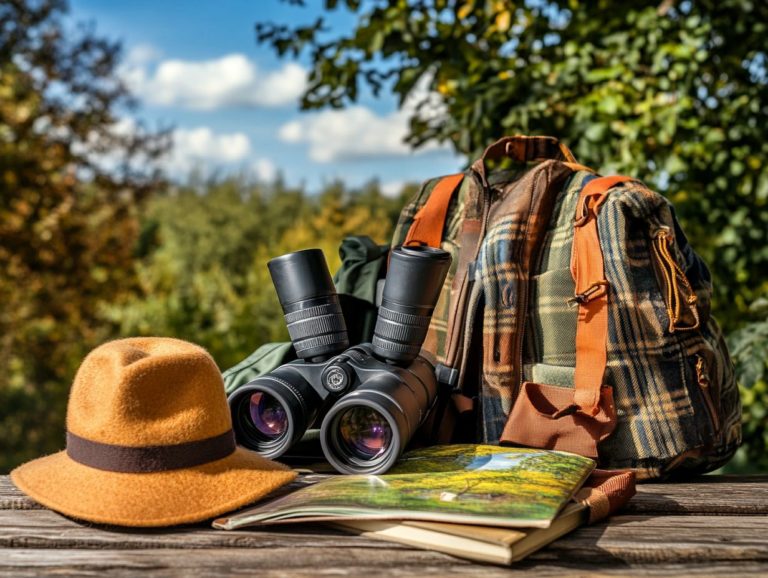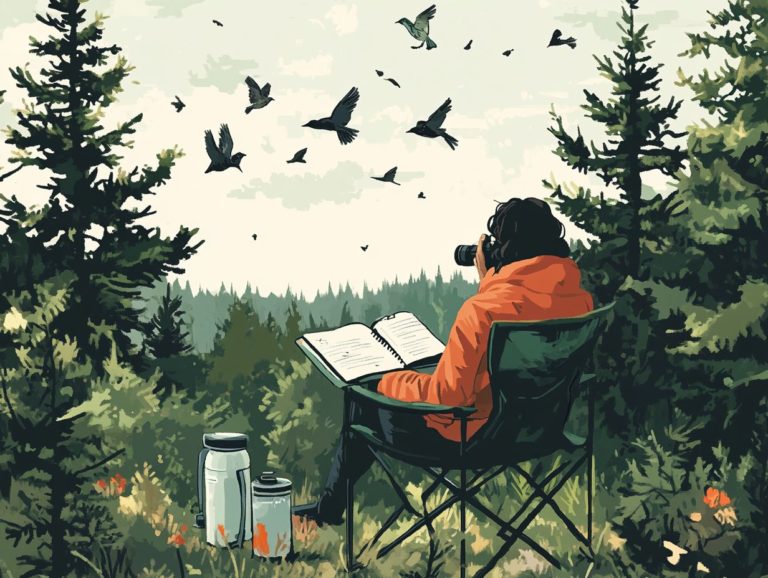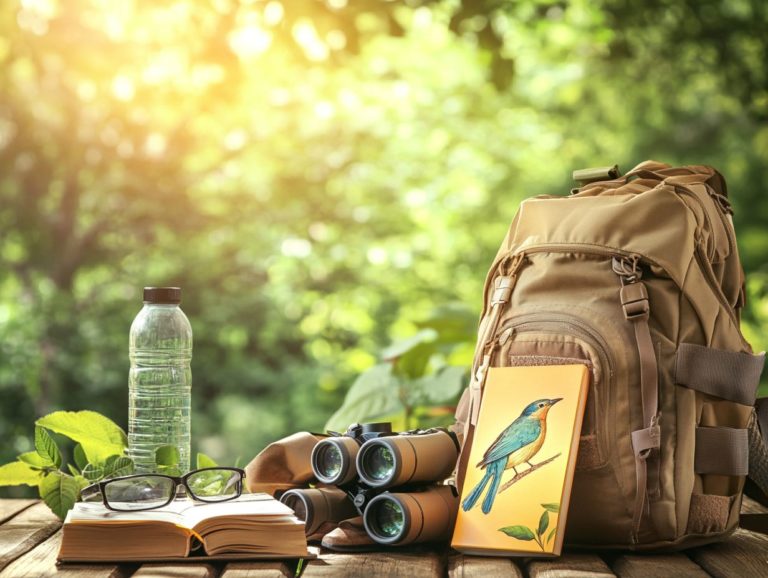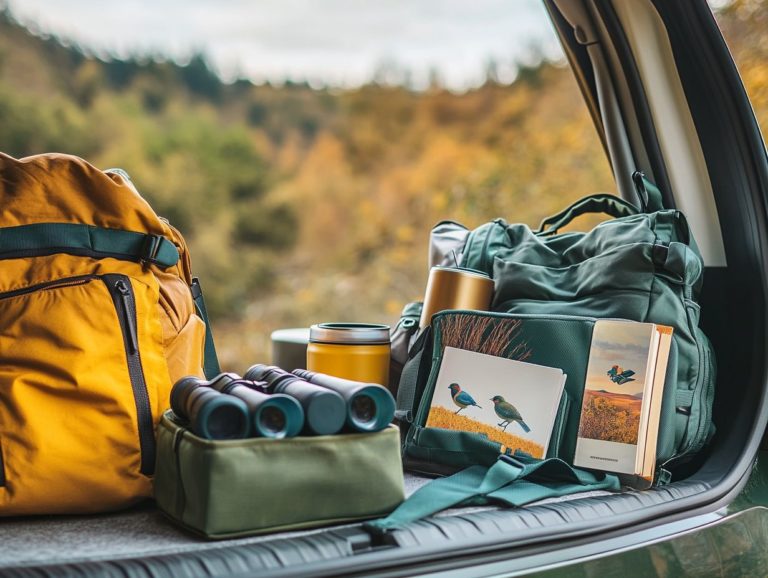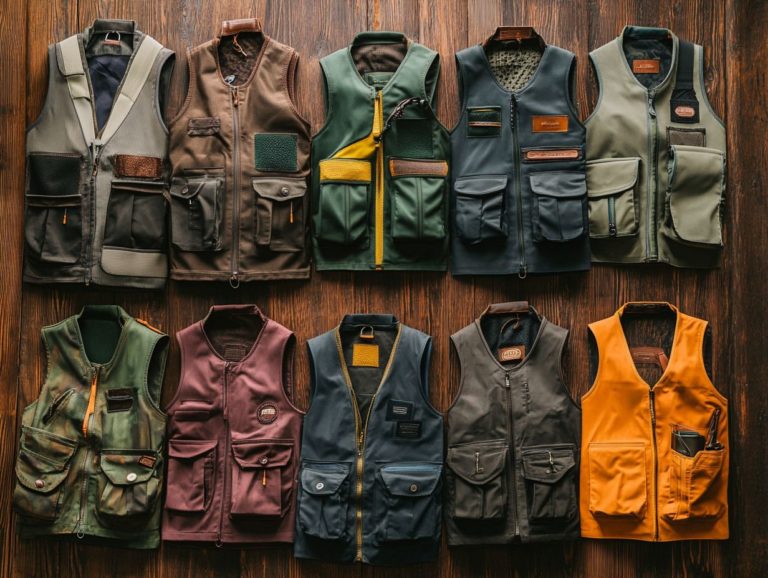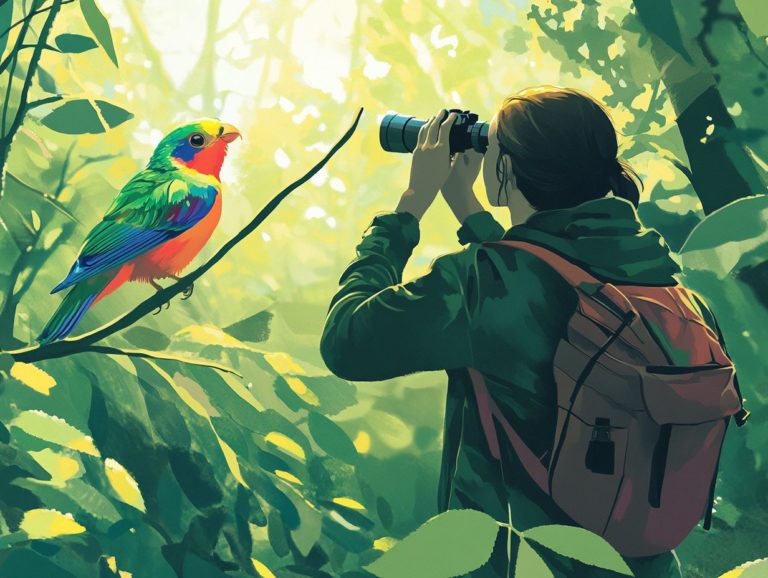Must-Have Accessories for Bird Photography
Bird photography offers an exhilarating adventure. It allows you to capture the beauty and grace of our feathered companions.
To enhance your photography experience and ensure you re fully equipped, certain accessories are essential. From specialized lenses to convenient tools that improve shooting comfort, this article delves into the must-have gear every bird photographer should consider.
Whether you re a seasoned pro or just beginning your journey, having the right equipment can transform your pursuit of stunning avian shots into a rewarding experience. Dive into these essentials and get ready to capture breathtaking images of birds in their natural habitat! Don’t miss out on the adventure!
Contents
- Key Takeaways:
- 1. Telephoto Lens
- 2. Tripod
- 3. Camera Bag
- 4. Remote Shutter Release
- 5. Lens Filters
- 6. External Flash
- 7. Spare Batteries and Memory Cards
- 8. Lens Cleaning Kit
- 9. Bean Bag or Camera Support
- 10. Rain Cover
- 11. Bird Call App
- 12. Portable Power Bank
- 13. Lens Hood
- 14. Camera Strap
- 15. Reflectors
- Frequently Asked Questions
- What are some essential accessories for bird photography?
- Why is a telephoto lens essential?
- What is the purpose of using a tripod for bird photography?
- How does a polarizing filter enhance bird photographs?
- Why should I invest in a remote shutter release for bird photography?
- What should I look for in a camera bag for bird photography?
Key Takeaways:
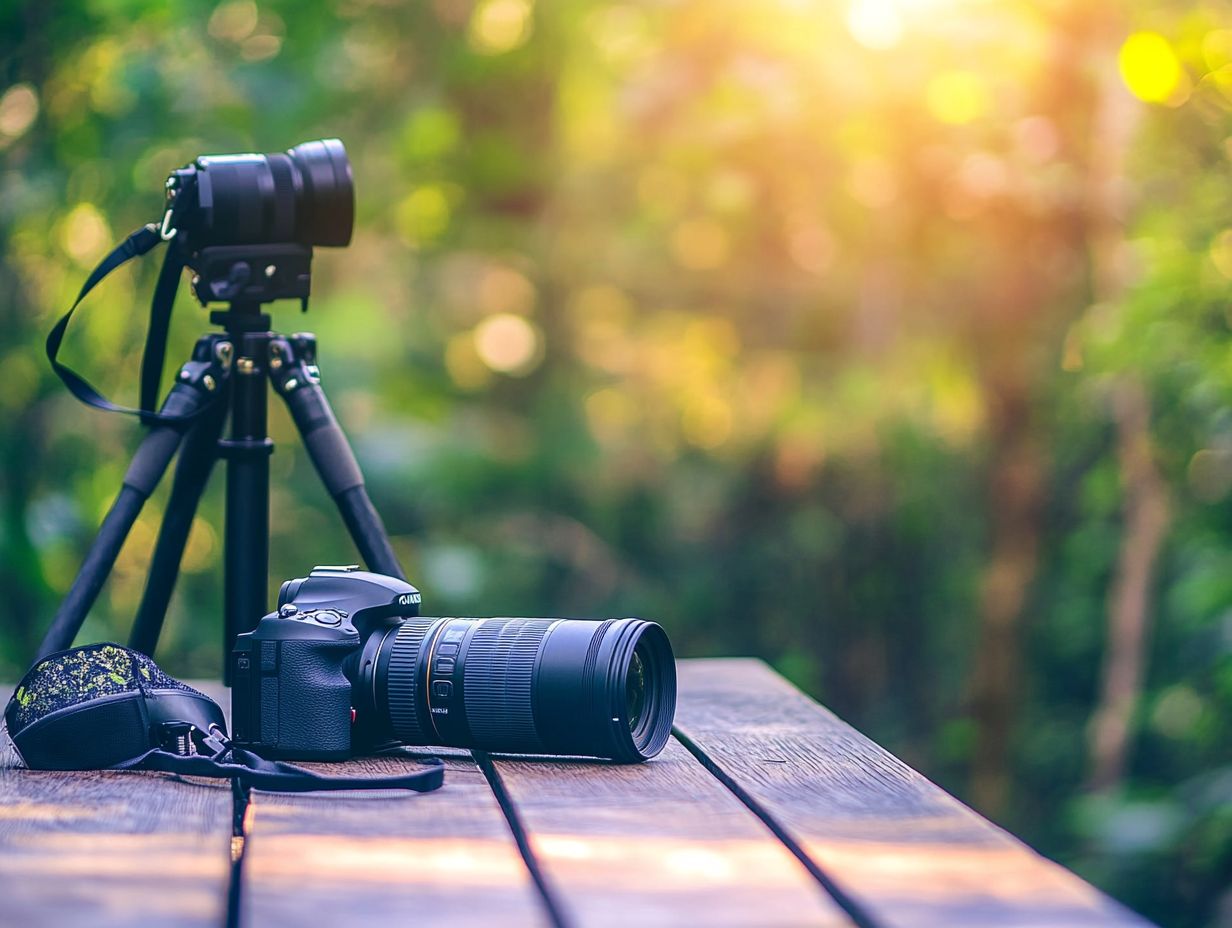
- Invest in a telephoto lens to capture sharp and detailed images of birds from a distance.
- Use a tripod to stabilize your camera and eliminate blurriness in your photos.
- Carry a camera bag to protect your equipment and easily transport it to different locations.
1. Telephoto Lens
A telephoto lens is an essential tool for your wildlife photography, especially in breathtaking locations like the Chilcotin Mountains in British Columbia. Here, you can observe grizzly bears in their natural habitat. This allows you to capture stunning moments from a respectful distance, ensuring the animals remain undisturbed.
By selecting a high-quality telephoto lens, such as the Canon R5 or Nikon Z50, you can significantly elevate the clarity and detail in your wildlife shots. Understanding the intricacies of optics is key in this genre. It enables you to unlock the full potential of your gear, ensuring sharp images even in challenging conditions.
Learning the right photography techniques is important. Using a stable tripod or fast shutter speeds can help you combat movement and capture the perfect shot.
Knowing how to manipulate light is also important be it during the golden hour or in dappled sunlight. This can dramatically enhance your image quality and transform each photograph from a mere snapshot into a breathtaking narrative of the natural world.
2. Tripod
A sturdy tripod is an essential piece of photography gear that provides the stability and support your camera craves. This is especially true when you’re out capturing wildlife in the unpredictable landscapes of the Chilcotin Mountains or facing low light conditions. If you’re just starting out, consider checking out the best bird photography gear for beginners to enhance your experience.
This essential tool enables you to achieve razor-sharp images even with slower shutter speeds. This is crucial for long exposure shots that reveal the intricate movements of animals or the ethereal beauty of dawn and dusk.
You ll find a variety of tripods at your disposal. There are lightweight models that make transport a breeze and heavy-duty options built to withstand rugged terrains.
Consider gimbals; they enhance your shooting flexibility by allowing smooth panning and tilting while tracking moving subjects. Together, these tools elevate your overall image quality by reducing camera shake and enabling you to focus on composition and creativity, all without the nagging concern of blurred shots.
3. Camera Bag
A well-designed camera bag is essential for any wildlife photographer, helping to keep your outdoor gear organized, protected, and easily accessible especially during expeditions in the rugged terrains of the Chilcotin Mountains.
Your bag should be waterproof to handle unexpected weather changes, ensuring your valuable equipment stays dry and functional. Compactness is equally important, allowing you to move with ease without compromising on storage capacity.
An ideal camera bag needs to fit not only your camera and lenses but also all your photography accessories, such as filters, extra batteries, and cleaning supplies. Brands like Gura Gear excel in providing lightweight yet durable options that maximize your mobility, while Think Tank offers well-structured compartments to keep everything in its proper place.
These features are essential for any wildlife photographer ready to immerse themselves in nature. To enhance your experience, consider the top 5 essential accessories for bird watching that will ensure you are fully equipped for the dynamic environments you will encounter.
4. Remote Shutter Release
Using a remote shutter release can elevate your wildlife photography. It enables you to capture fleeting moments without the risk of camera shake, especially when aiming for elusive creatures in the Chilcotin Mountains.
This handy tool is invaluable for various techniques, such as long exposure keeping the camera’s shutter open longer to capture more light and timer settings, where every bit of precision matters. Imagine capturing that perfect shot of a rare bird against a breathtaking landscape; the remote shutter release helps eliminate any vibrations caused by manually pressing the shutter button.
It also allows for a stealthy approach. This makes it easier to observe animal behavior without drawing attention to yourself or your camera. By providing a quiet way to trigger your shots, you can blend seamlessly into your surroundings, capturing candid moments that might otherwise slip away.
5. Lens Filters
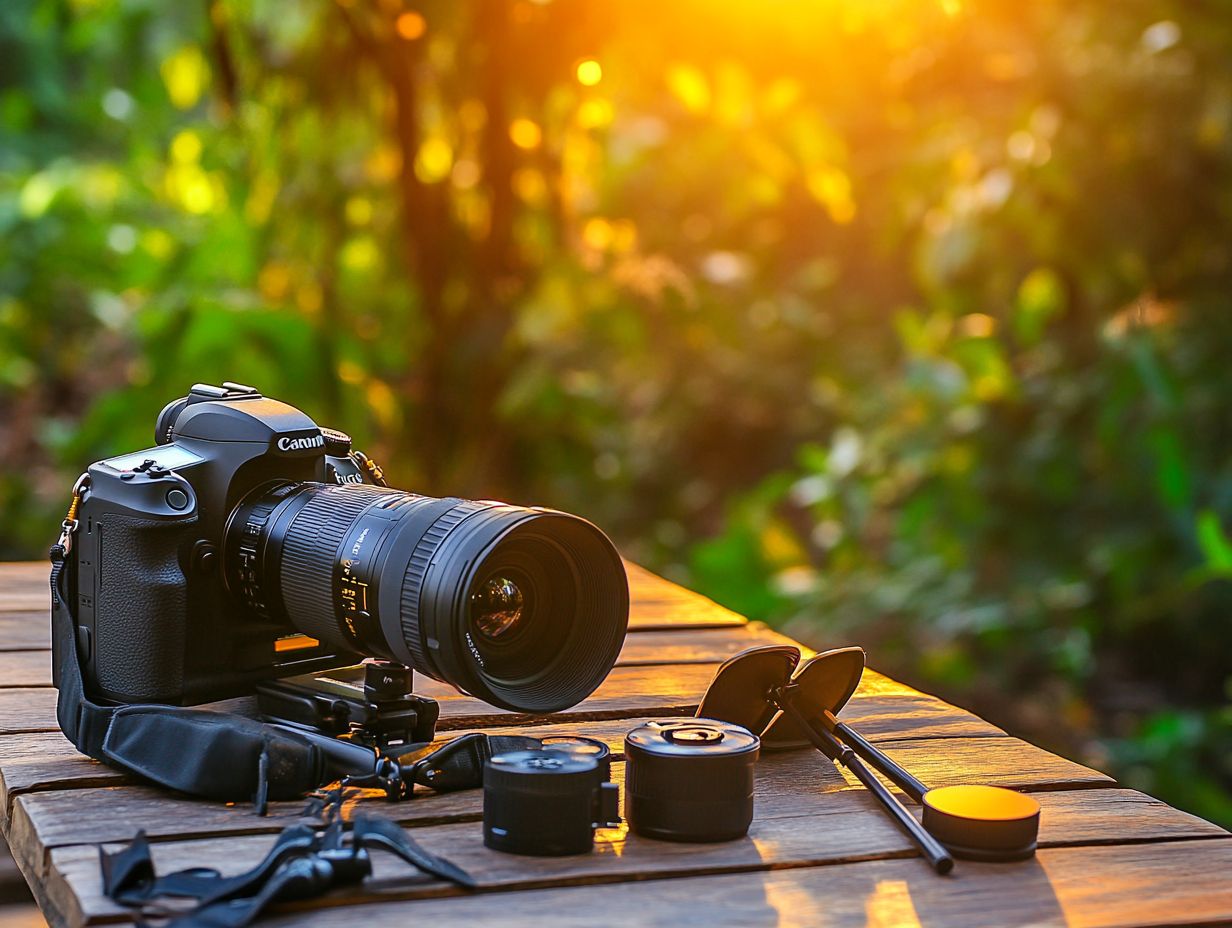
Lens filters are essential companions for your wildlife photography adventures. They enhance image quality by managing light conditions, enriching colors, and protecting your gear during outdoor excursions in stunning locations like British Columbia’s Chilcotin Mountains.
Consider using a UV filter. It acts as a protective barrier for your lens against dust and scratches while effectively reducing haze from atmospheric conditions. This makes it an essential tool for navigating diverse climates.
The polarizing filter significantly cuts down on glare from reflective surfaces. It allows you to capture richer colors and improved contrast an invaluable asset when photographing animals near water.
Neutral density (ND) filters enable longer exposure times, perfect for capturing motion blur during dynamic moments, like the graceful flight of a bird or the powerful rush of a waterfall.
Together, these filters elevate the aesthetic quality of your wildlife images and help you seize breathtaking scenes that showcase the splendor of nature.
6. External Flash
An external flash can dramatically enhance your wildlife photography. It allows you to conquer challenging lighting conditions and capture intricate details of animals, like grizzly bears, even in the dim light of the Chilcotin Mountains.
By delivering a powerful burst of light, it illuminates your subjects without the harsh glare often associated with built-in flashes. This tool highlights the intricate textures of fur and feathers, bringing vibrant life to each shot.
When using an external flash in low-light situations, such as at dawn or dusk, adjusting the flash s power settings is crucial to avoid overexposure. With compatibility across popular camera brands like Canon and Nikon, you ll find an array of external flashes tailored to your needs, ensuring you capture stunning images of elusive creatures in their natural habitat.
7. Spare Batteries and Memory Cards
Having spare batteries and memory cards is essential for any wildlife photography expedition. This preparation allows you to pursue your photographic vision without interruptions, capturing the breathtaking scenes of the Chilcotin Mountains in British Columbia.
To fully immerse yourself in the moment, knowing which types of batteries are compatible with your camera setup is important. Different brands and models can impact performance significantly. Investing in high-capacity lithium-ion batteries is wise, as they usually provide longer shooting times and faster recharge cycles.
For memory cards, opt for high-speed choices like UHS-I or UHS-II SD cards. These options ensure swift and reliable image capture, particularly for fleeting moments that demand your attention.
Organizing these crucial components in a dedicated camera bag can streamline your experience. This provides quick access and easy inventory checks. You can separate cards by capacity or designate specific pockets for batteries. A thoughtful organization strategy minimizes downtime during your shoot.
8. Lens Cleaning Kit
A lens cleaning kit is an essential collection of photography accessories that allows you to maintain the quality of your optics. This ensures you capture sharp images of elusive wildlife in the breathtaking landscapes of the Chilcotin Mountains.
This kit usually consists of microfiber cloths, lens solution, and a blower. Each plays a crucial role in keeping your glass surfaces clear. Dust, smudges, or fingerprints can significantly impact image quality, leading to a loss of contrast and clarity.
When cleaning your lenses, use gentle, circular motions with a microfiber cloth to avoid scratches. The blower is perfect for dislodging larger particles without contact. Regular maintenance optimizes your equipment’s performance and extends its lifespan. Equip yourself with this essential kit today!
9. Bean Bag or Camera Support
A bean bag or camera support can significantly elevate your stability during wildlife photography. This is especially true when capturing the unpredictable movements of animals like grizzly bears in the stunning landscapes of British Columbia’s Chilcotin Mountains.
These supports provide a rock-solid base that minimizes camera shake, leading to sharper images especially crucial when using heavy telephoto lenses, which are long lenses that allow you to zoom in on distant subjects. Place them on a stable surface, such as a rock or the ground, and adjust them to align with your shooting angle.
For optimal results, experiment with various placements. Try resting the bean bag on your knees or securing it against a tree. Discover what works best for the unique terrain and conditions you face!
10. Rain Cover
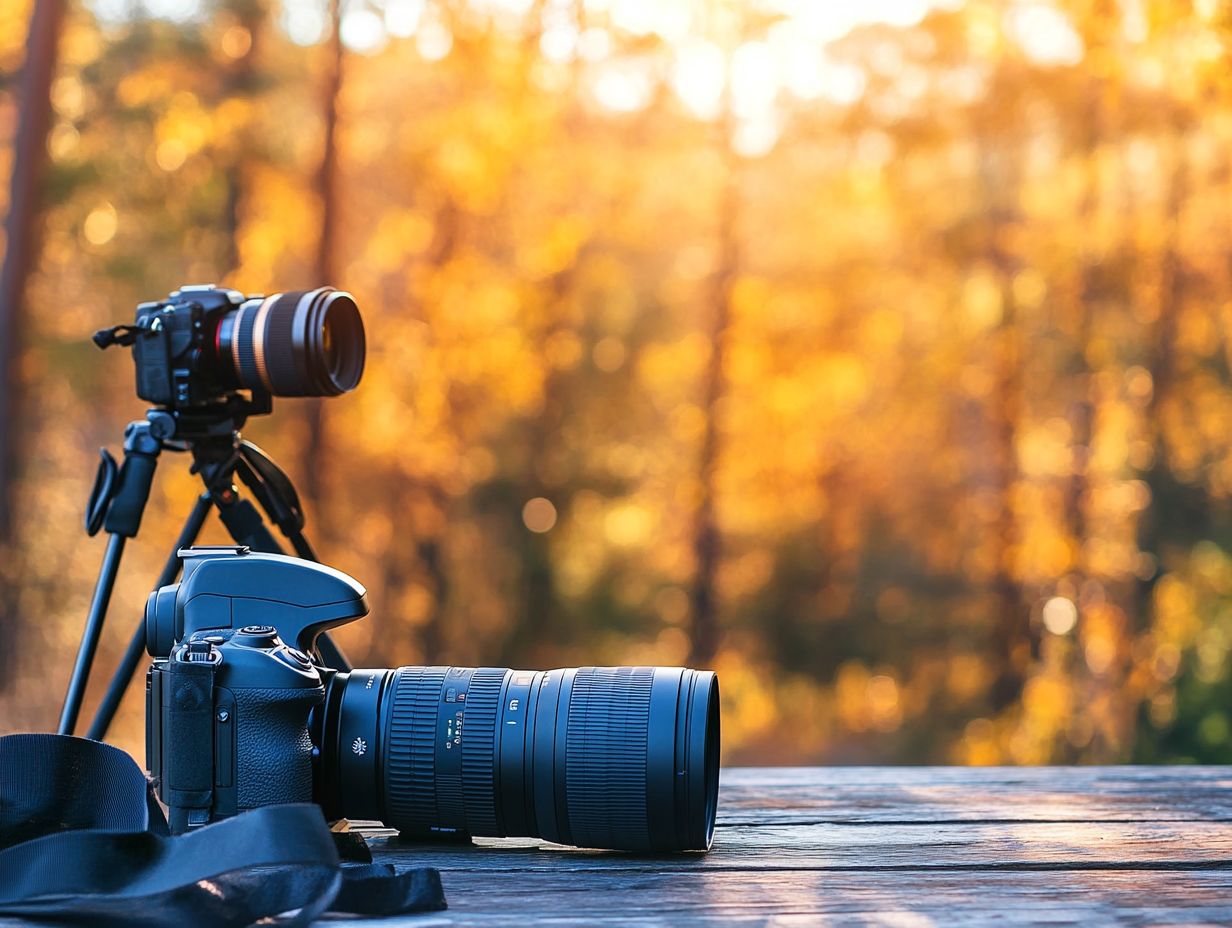
A reliable rain cover is crucial for every wildlife photographer! It safeguards your valuable photography gear from the unpredictable weather often encountered during your expeditions in the Chilcotin Mountains of British Columbia.
In these rugged environments, conditions can shift from sunny to torrential rain in the blink of an eye. Waterproofing is not just a luxury but a necessity for capturing fleeting moments of nature’s beauty.
Various types of rain covers are designed for different setups. You ll find everything from simple sleeve-type covers that slip over your lens to full-body covers providing comprehensive protection.
When selecting the perfect cover, consider factors like the size of your camera and the length of your lens. A good fit allows you to concentrate on your shots without worrying about potential damage from the elements. Don t let rain ruin your photography choose the right rain cover today!
11. Bird Call App
A bird call app is a game-changer for your wildlife photography adventures. This tool helps attract elusive species that might otherwise remain hidden in the stunning ecosystems of the Chilcotin Mountains.
These applications utilize an impressive library of bird calls and songs, allowing you to play them back in the field. By mimicking the sounds of specific birds, you can elicit responses from nearby wildlife, making it easier to observe and photograph them in their natural habitats.
Popular choices like Merlin Bird ID and BirdNET not only provide extensive collections of calls but also include identification tools to recognize different species by their sounds. Use these apps responsibly overusing calls can stress birds and disrupt their natural behaviors. Always observe from a respectful distance!
12. Portable Power Bank
A portable power bank is your best friend on wildlife adventures! It provides a reliable energy source for your devices during those extended excursions in the breathtaking yet remote landscapes of the Chilcotin Mountains.
In these stunning but unpredictable environments, keep your cameras and mobile apps charged to seize every fleeting moment! The importance of battery life cannot be overstated; a drained device could mean missed opportunities to capture wildlife in action.
When searching for the ideal power bank, consider key factors like capacity, weight, and the number of ports to support multiple devices. Manage your power wisely during shoots. For example, turning off non-essential features or using airplane mode, a setting that reduces battery use, can significantly extend your battery life.
13. Lens Hood
A lens hood greatly enhances your shooting experience, especially in the challenging light conditions of wildlife photography in British Columbia’s Chilcotin Mountains.
These versatile accessories block stray light from entering your lens, ensuring that your images remain sharp and colors vibrant. This is crucial when capturing those fleeting moments of animals in their natural habitat. Additionally, checking out the top bird watching accessories can provide a physical barrier against hazards like rain, snow, and unexpected bumps, offering an added layer of protection for your delicate lens elements.
With various types of lens hoods available, including petal-shaped and cylindrical options, you can choose the perfect fit for your focal lengths and shooting styles. This adaptability allows you to optimize your setup whether you’re photographing sweeping landscapes or intimate portraits.
14. Camera Strap
A comfortable and supportive camera strap is essential outdoor gear for wildlife photographers, ensuring effortless portability while minimizing fatigue during long days spent preparing for a bird photography outing in the breathtaking wildlife of the Chilcotin Mountains.
You’ll find this gear in a variety of materials and designs, featuring padded straps for extra comfort and adjustable options tailored to different body types. Durable straps crafted from high-quality textiles provide necessary support for heftier camera bodies and stand up to the demands of outdoor adventures.
Having a reliable strap enables you to focus on your craft, enriching your overall experience as you immerse yourself in nature without the nagging distraction of equipment discomfort.
15. Reflectors
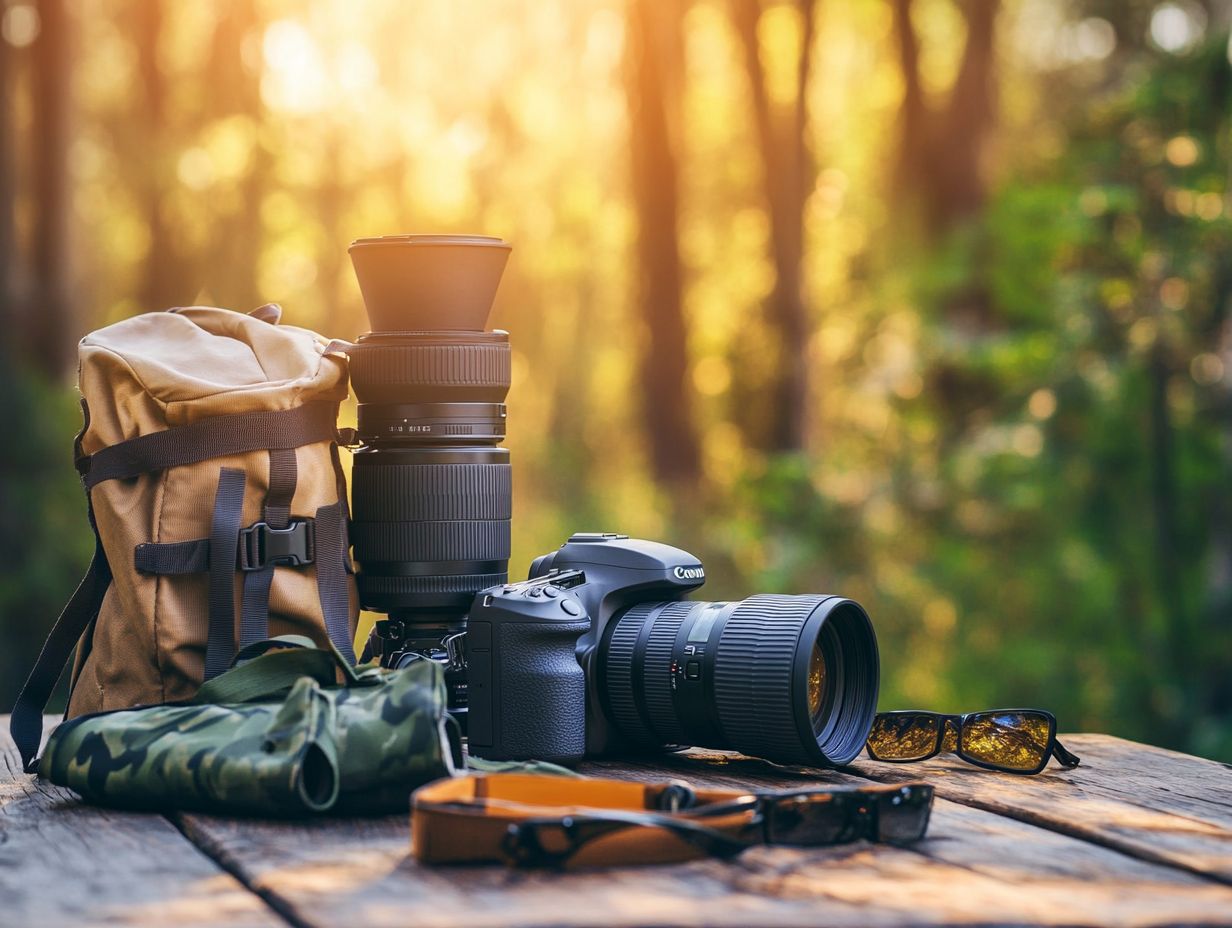
Reflectors are essential photography accessories that can elevate your wildlife photography by expertly managing light conditions. For birders, having the right gear is crucial, including the top 10 binocular accessories every birder needs, as they illuminate subjects in the often-dim environments of the Chilcotin Mountains.
This technology uses reflected light to brighten shadows and enhance colors, allowing you to capture stunning, detailed images. By strategically positioning a reflector to bounce light toward a subject, you can soften harsh shadows or accentuate specific wildlife features, resulting in more captivating images.
Reflectors come in various types, from collapsible disk reflectors to larger fabric versions, each serving a unique purpose. Silver reflectors provide a cooler effect, while gold ones offer warmer tones. Mastering the effective deployment of these tools is essential; the right placement can transform an ordinary shot into something truly extraordinary.
Frequently Asked Questions
What are some essential accessories for bird photography?
Must-have accessories include a telephoto lens, tripod, polarizing filter, remote shutter release, and a camera bag for carrying all your gear.
Why is a telephoto lens essential?
A telephoto lens allows you to zoom in and capture fine details of birds from a distance, but for an even closer look, consider these tips for choosing binoculars for bird photography without disturbing or scaring them away.
What is the purpose of using a tripod for bird photography?
A tripod stabilizes your camera. This helps to avoid camera shake, which happens when your hands move while taking a photo, resulting in sharper and clearer images.
It also keeps your camera steady while you wait for that perfect shot.
How does a polarizing filter enhance bird photographs?
A polarizing filter is a game-changer! It reduces glare and reflections, making colors more vibrant.
This enhancement gives your bird photographs that wow factor.
Why should I invest in a remote shutter release for bird photography?
A remote shutter release lets you take photos without touching your camera. This minimizes camera shake, ensuring sharper images.
It also allows you to capture birds in their natural behavior without disturbing them.
What should I look for in a camera bag for bird photography?
When choosing a camera bag, pick one that s comfortable and durable.
It should have enough space for your gear and offer easy access to your equipment while protecting it from the elements.

